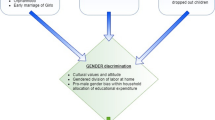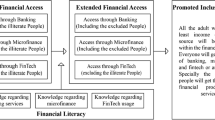Abstract
The reform of educational finance systems is underway in various states. The results of the reforms in early states can act as guides to the design of new finance systems in other states. Based on recent experiences in New Jersey, the authors discuss the role that policy analysis can play in aiding the school finance reform process. The results of the New Jersey reform suggest that the policy analyst must understand the behavioral responses of school districts to new aid and must take into account likely changes in the underlying economic conditions of local areas if he or she hopes to accurately assess the impacts of alternative finance proposals.
Similar content being viewed by others
References
Barro, S. M. (1972). Theoretical Models of School District Expenditure Determination and the Impact of Grants-in-Aid. Santa Monica: Rand Corporation, February.
Bradbury, K. (1979). “The Fiscal Distress of Cities”. Mimeograph. Washington, D.C.: Brookings Institution.
Brazer, H. (1975). “A cost adjustment index for Michigan School Districts,” Selected Papers in School Finance. Washington, D.C.: U.S. Department of Health, Education and Welfare.
Carroll, S. J. (1979). The Search for Equity in School Finance: Summary and Conclusions. Santa Monica: Rand Corporation.
Courant, P. N., E. M. Gramlich, and D. L. Rubinfeld (1979). “The stimulative effect of intergovernmental grants: or why money sticks where it hits,” in P. Mieszkowski and W. Oakland (eds:), Fiscal Federalism and Grants-in-Aid. Washington, D.C.: Urban Institute.
Crecine, J. (1967). “A computer simulation model of municipal budgeting.” Management Sciences 13: 786–815.
Di Pasquale, D. (1979). “State Aid to Local School Districts: A Comparative Analysis.” Unpublished Ph. D. dissertation, Massachusetts Institute of Technology.
Feldstein, M. S. (1975). “Wealth, neutrality and local public choice in public education,” American Economic Review 65: 75–89.
Goertz, M. E. (1978). Money and Education: Where Did the 400 Million Dollars Go? Princeton: Education Policy Research Institute.
Gurwitz, A. (1977). The Financial Condition of Urban School Districts: A Federal Policy Perspective. Santa Monica: Rand Corporation.
Inman, R. P. (1977). “Micro-fiscal planning in the regional economy: a general equilibrium approach,” Journal of Public Economics 7: 237–260.
Inman, R. P. (1978). “Optimal fiscal reform of metropolitan schools: Some simulation results.” American Economic review 68: 107–122.
Knickman, J. and A. Reschovsky (1980). “Fiscal Stress and School District Responses to Inter-governmental Aid.” Proceedings of the Seventy-Second Annual Conference on Taxation, Oklahoma: National Tax Association - Tax Institute of America.
Ladd, H. F. (1975). “Local education expenditures, fiscal capacity, and the composition of the property tax base.” National Tax Journal 28: 145–158.
Lehne, R. (1978). Quest for Justice. New York: Longmans.
Margolis, J. (1974). “Public policies for private profit: urban governments.” in Hochman and G. E. Peterson (eds.), Redistribution through Public Choice. New York: Columbia University Press.
Nathan, R. P. and Adams, C. (1976). “Understanding central city hardship,” Political Science Quarterly, 91: 47–62.
Netzer, D. (1974). “State education aid and school tax efforts in large cities,” Selected Papers on School Finance. Washington, D.C.: U.S. Department of Health, Education and Welfare.
New Jersey Supreme Court (1976). Robinson v. Cahill. 355 A2d 192-189.
Niskanan, W. A. (1975). “Bureaucrats and politicians,” The Journal of Law and Economics 18:617–643.
Oates, W. (1972). Fiscal Federalism. New York: Harcourt, Brace, Jovanovich.
Reschovsky, A. and Knickman, J. (1976). “Municipal overburden in New Jersey: an assessment,” New Jersey Urban Education Research Reports, No. 2. Trenton: New Jersey Urban Education Observatory.
Wilde, J. A. (1968). “The expenditure effects of grants-in-aid programs,” National Tax Journal 21: 340–348.
Author information
Authors and Affiliations
Rights and permissions
About this article
Cite this article
Knickman, J.R., Reschovsky, A. The implementation of school finance reform. Policy Sci 12, 301–315 (1980). https://doi.org/10.1007/BF00138158
Issue Date:
DOI: https://doi.org/10.1007/BF00138158




